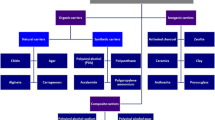Abstract
Anin situ study of the P-uptake ability ofAcinetobacter calcoaceticus was carried out using the alginate immobilization technique. ImmobilizedA. calcoaceticus cells displayed a high P-uptake ability (>97% P-accumulating cells) when immersed in the aerobic zone of an activated sludge system for 30–240 min. The overall P-accumulation pattern of the anaerobic zone depicted a typical P-release mechanism. However, limited P-accumulation was also observed at this stage. Growth and anaerobiosis were not prerequisites for P-uptake. The immobilized cell retention time in the anaerobic zone did not affect remarkably the inherent P-uptake ability of immobilizedA. calcoaceticus when exposed to the aerobic stage. P-uptake and release were reversible and depended on the environmental conditions to which immobilized cells were exposed. Immobilization ofA. calcoaceticus using alginate can be regarded as a reliable method of studying pure cultures in the activated sludge process.
Similar content being viewed by others
References
Barnard JL. 1976. A review of biological phosphorus removal in the activated sludge process. Water SA 2: 136–144.
Bashan Y. 1986. Alginate beads as synthetic inoculant carriers for slow release of bacteria that affect plant growth. Appl Environ Microbiol 51: 1089–1098.
Bosch M. 1992. Phosphorus uptake kinetics ofAcinetobacter in activated sludge mixed liquor. MSc thesis, University of Pretoria, Pretoria 0002, South Africa.
Buchan L. 1980. The location and nature of accumulated phosphorus in activated sludge. DSc thesis, University of Pretoria, Pretoria 0002, South Africa.
Buchan L. 1981. The location and nature of accumulated phosphorus in seven sludges from activated sludge plants which exhibited enhanced phosphorus removal. Water SA 7: 1–7.
Cloete TE. 1984. The detection ofAcinetobacter in activated sludge and its possible role in biological phosphorus removal. DSc thesis, University of Pretoria, Pretoria 0002, South Africa.
Comeau Y, KJ Hall, REW Hancock and K Oldham. 1986. Biochemical model for enhanced biological phosphorus removal. Water Res 20: 1511–1521.
Dienema MH, LHA Habets, J Scholten, E Turkstra and HA Webers. 1980. The accumulation of polyphosphate inAcinetobacter spp. FEMS Microbiol Lett 9: 275–279.
Fuhs GW and M Chen. 1975. Microbiological basis of phosphate removal in the activated sludge process for the treatment of waste-water. Microb Ecol 2: 119–138.
Gerber A, ES Mostert, CT Winter and RH de Villiers. 1986. The effect of acetate and other short-chain carbon compounds on the kinetics of biological nutrient removal. Water SA 12: 7–12.
Jenkins D and V Tandoi. 1991. The applied microbiology of enhanced biological phosphate removal—accomplishments and needs. Wat Res 25: 1471–1478.
Levin GV and J Shapiro. 1965. Metabolic uptake of phosphorus by wastewater organisms. WPCF 37: 800–821.
Lötter LL, MC Wentzel, RE Loewenthal, GA Ekama and GvR Marais. 1986. A study of selected characteristics ofAcinetobacter spp. isolated from activated sludge in anaerobic/anoxic/aerobic and aerobic systems. Water SA 12: 203–208.
Marais GvR, RE Loewenthal and IP Siebritz. 1983. Observations supporting phosphate removal by biological excess uptake—A review. Wat Sci Tech 15: 15–41.
Nicholls HA. 1978. Kinetics of phosphorus transformations in aerobic and anaerobic environments. 9th IAWPR Post-Conference Seminar, June 1978, Copenhagen. Prog Wat Technol 10: 89–102.
Ohkate H, K Takahashi, Y Tsuzuki and K Toda. 1985. Uptake and release of phosphate by a pure culture ofAcinetobacter calcoaceticus. Wat Res 19: 1587–1594.
Osborn DW and HA Nicholls. 1978. Optimization of the activated sludge process for the biological removal of phosphorus. Prog Wat Technol 10: 261–277.
Streichan M and G Schön. 1991. Periplasmic and intracytoplasmic polyphosphate and easly washable phosphate in pure cultures of sew-age bacteria. Wat Res 25: 9–13.
Van Starkenburg W, JH Rensink and GBJ Rijs. 1993. Biological Premoval: state of the art in the Netherlands. Wat Sci Technol 27: 317–328.
Van Veen HW, K Abee, GJJ Kortstee, WN Konings and AJB Zehnder. 1993. Characterization of two phosphate transport sytems inAcinetobacter johnsonii 210A. J Bacteriol 175: 200–206.
Author information
Authors and Affiliations
Rights and permissions
About this article
Cite this article
Muyima, N.Y.O., Cloete, T.E. Phosphate uptake by immobilizedAcinetobacter calcoaceticus cells in a full scale activated sludge plant. Journal of Industrial Microbiology 15, 19–24 (1995). https://doi.org/10.1007/BF01570008
Received:
Accepted:
Issue Date:
DOI: https://doi.org/10.1007/BF01570008




